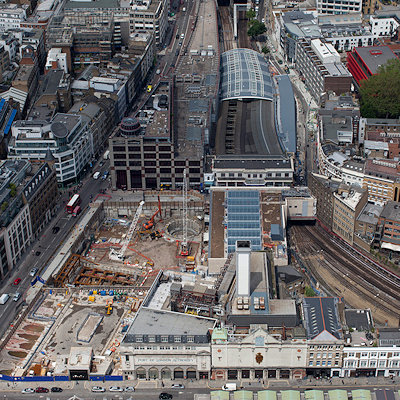
Like us on Facebook
PLACE NAMES


 
|
|
Farringdon
|

| |
There are numerous places in England called Farringdon; all meaning fern covered hill. William and Nicholas de Faringdon, whose name is likely to have originated from one of these places, were two related prominent citizens and Aldermen in the early 13th century. Nicholas purchased the area of the Farringdon ward of the City of London in 1279 and became its Alderman in 1281. In 1394 the ward was split into the still extant Farringdon Within and Farringdon Without.
Farringdon Station was built close to Farringdon Road, a northern continuation of Farringdon Street outside the City, after which it was originally named when first opened in 1863 as Farringdon Street Station. Farringdon Street was built over the River Fleet in 1737 and takes its name from either the Farringdon Wards of the City or was named in honour of Nicholas de Faringdon. The road was widened in 1829. The area was previously the location of Farringdon Market, established for the sale of fruit and vegetables on 20 November 1826 when the earlier Fleet Market was cleared to enable the laying out of Farringdon Street. The station was renamed Farringdon & High Holborn in 1922 and finally Farringdon in 1936.
Immediately south of the centre and station lies Smithfield Meat Market. Originally built on the outside wall of the city, effluence from the market ran down the slope into the River Fleet which then ran into the Thames. The stench of rotting meat off-cuts and blood caused the stench that permeated the waterside homes and downstream.
|
 Feel free to Email me any additions or corrections Feel free to Email me any additions or corrections
LINKS AVAILABLE TO YOUR SITE
| |





